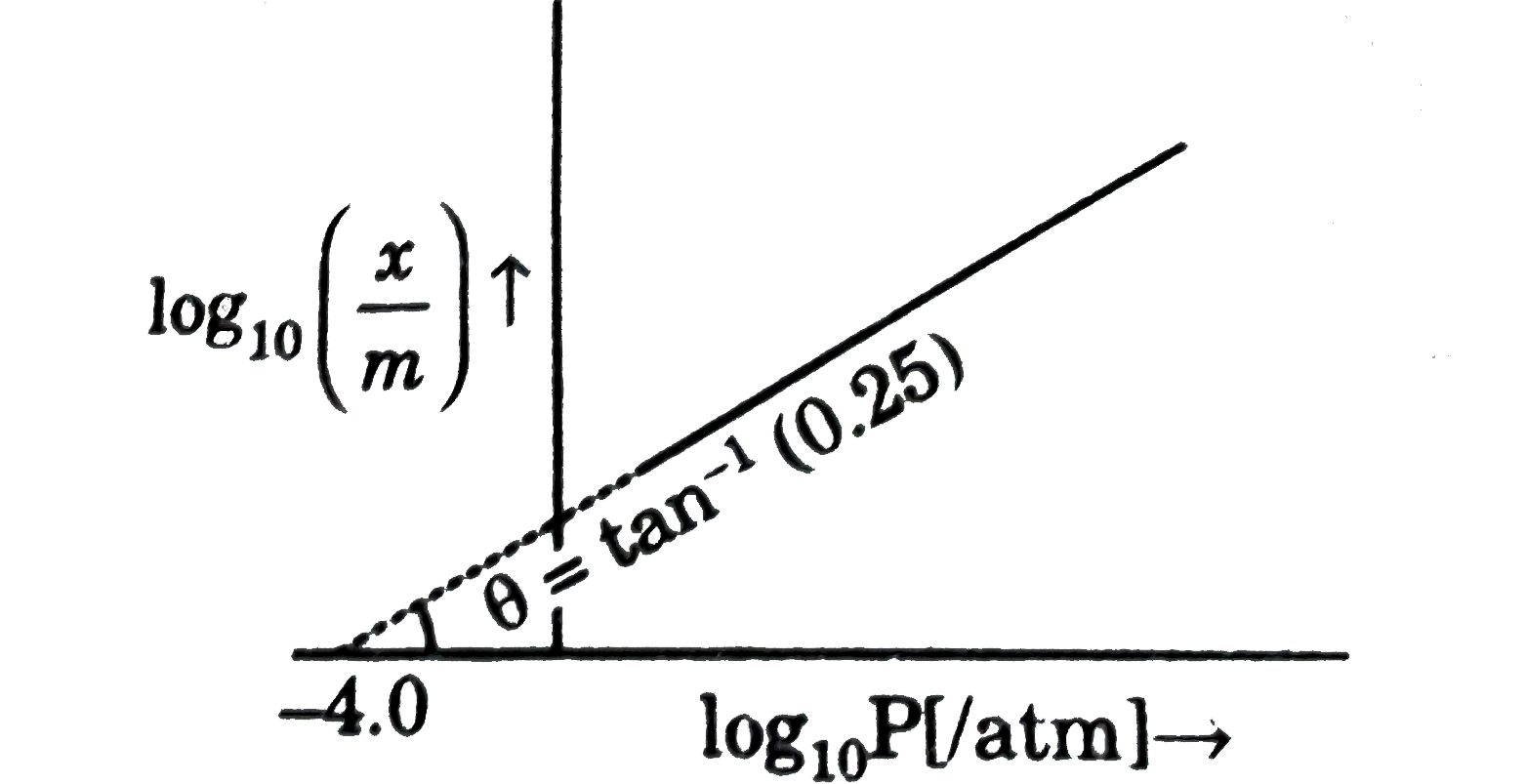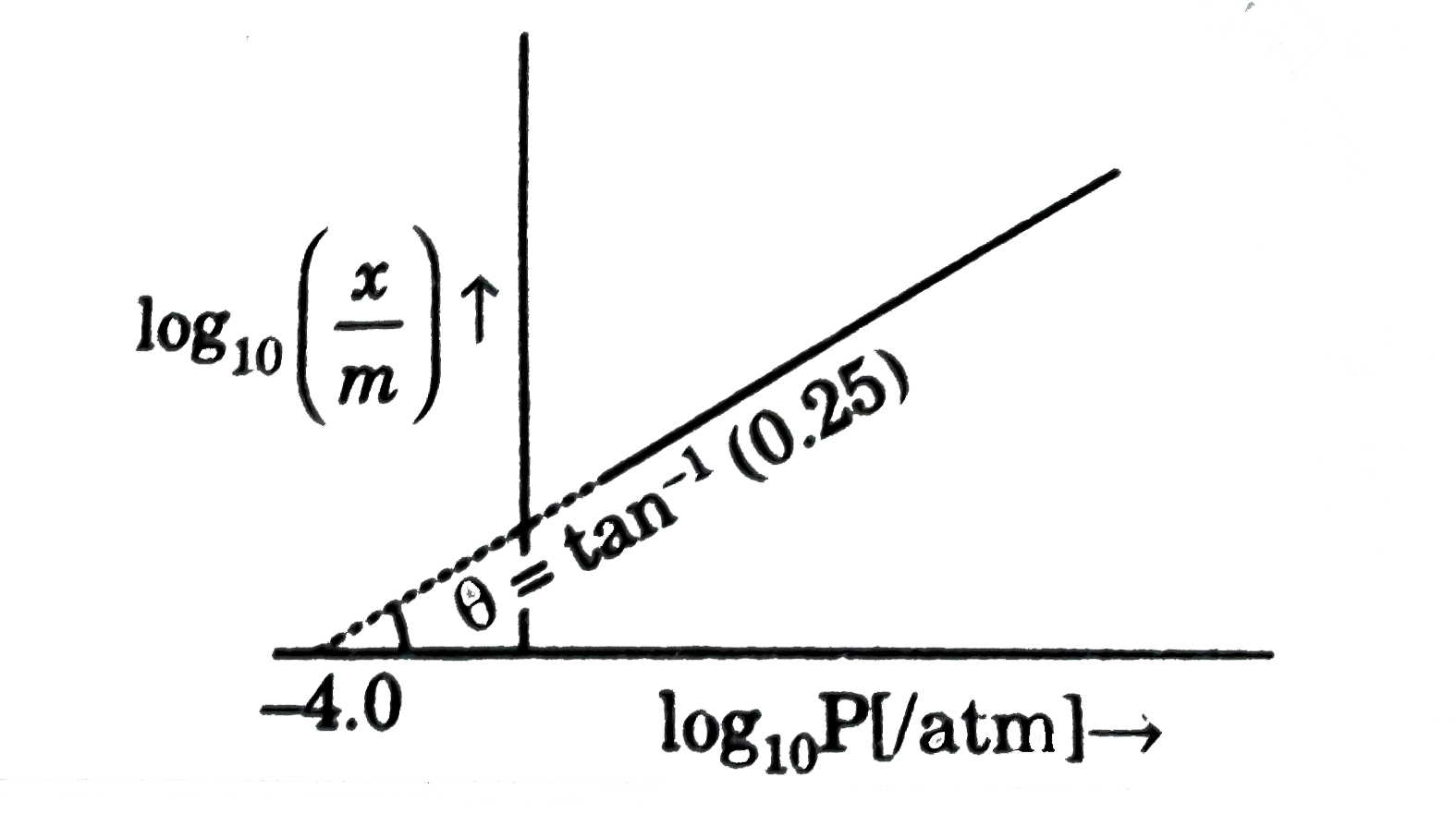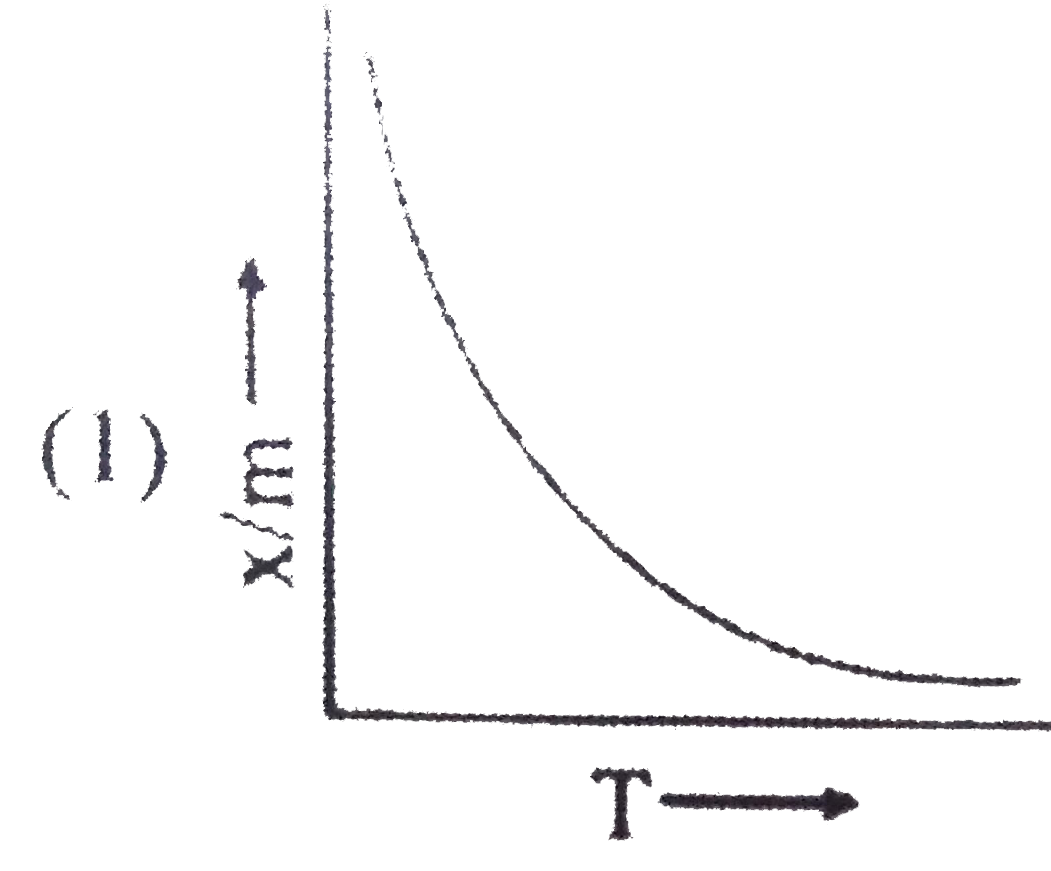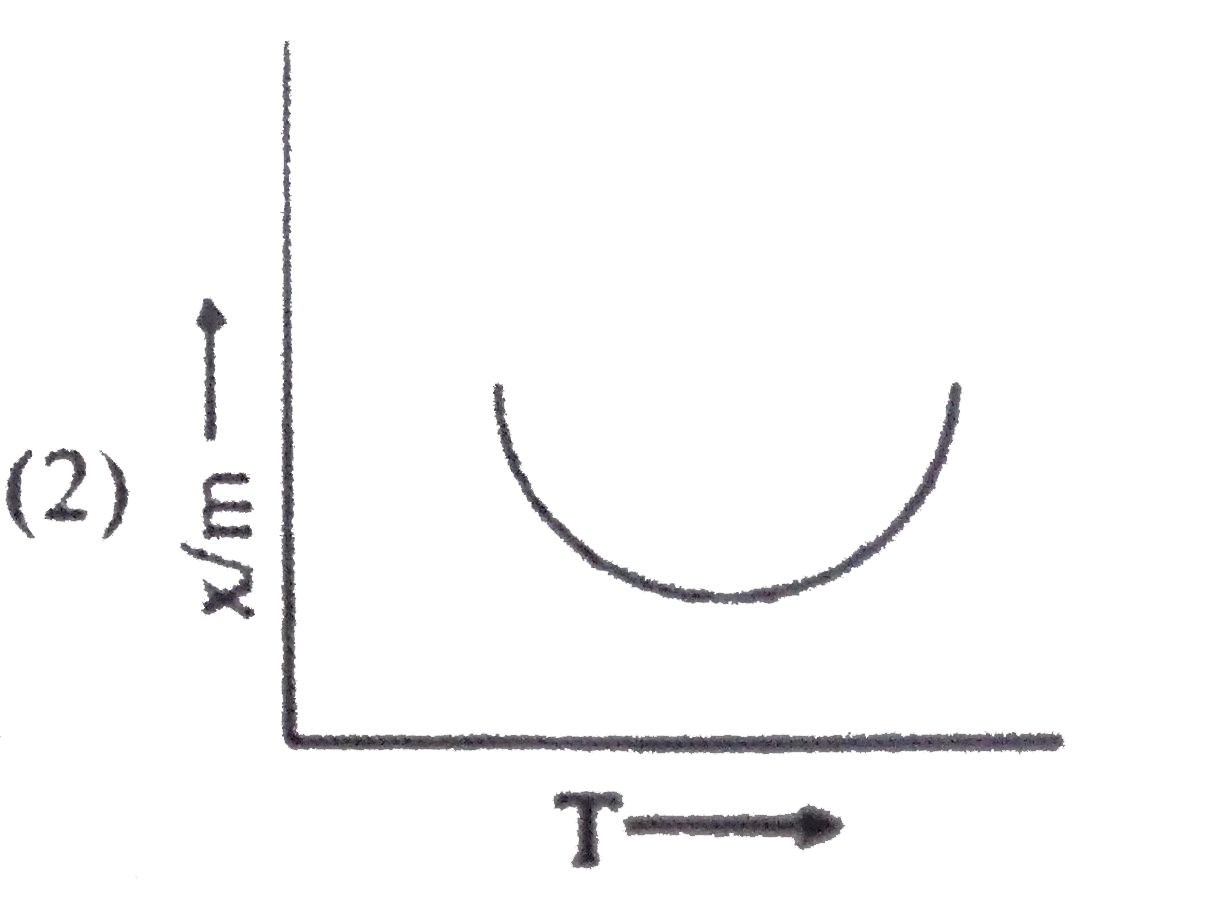The adsorption of a gas at a metal surface is called occlusion. The extent of gas adsorbed at metal surface at a certain temperature depends on pressure as
xm=K.P1/n
where K and n are constant for a particular combination of gas and metal at fixed temperature and xmis the mass of gas adsorbed per unit mass of metal .For H2 gas adsorbing at Pt-surface, the following graph is obtained.

The mass of H2 gas adsorbed on the surface of 10 gm Pt at 16 atm is :
The correct Answer is:A
Step by step video, text & image solution for The adsorption of a gas at a metal surface is called occlusion. The extent of gas adsorbed at metal surface at a certain temperature depends on pressure as (x)/(m)=K.P^(1//n) where K and n are constant for a particular combination of gas and metal at fixed temperature and (x)/(m)is the mass of gas adsorbed per unit mass of metal .For H_(2) gas adsorbing at Pt-surface, the following graph is obtained. The mass of H_(2) gas adsorbed on the surface of 10 gm Pt at 16 atm is : by Chemistry experts to help you in doubts & scoring excellent marks in Class 12 exams.
Topper's Solved these Questions
- BOOK - GRB PUBLICATIONCHAPTER - GRAPHICAL INTERPRETATIONEXERCISE - Comprehension 21videos
GRAPHICAL INTERPRETATION
- BOOK - GRB PUBLICATIONCHAPTER - GRAPHICAL INTERPRETATIONEXERCISE - Comprehension 31videos
GRAPHICAL INTERPRETATION
- BOOK - GRB PUBLICATIONCHAPTER - GRAPHICAL INTERPRETATIONEXERCISE - Comprehension 11videos
GRAPHICAL INTERPRETATION
- BOOK - GRB PUBLICATIONCHAPTER - F-BLOCK ELEMENTSEXERCISE - Subjective type7videos
F-BLOCK ELEMENTS
- BOOK - GRB PUBLICATIONCHAPTER - HYDROCARBON (ALIPHATIC)EXERCISE - Previous years jee questions28videos
HYDROCARBON (ALIPHATIC)
Similar Questions
The adsorption of a gas at a metal surface is called occlusion. The extent of gas adsorbed at metal surface at a certain temperature depends on pressure as
xm=K.P1/n
where K and n are constant for a particular combination of gas and metal at fixed temperature and xmis the mass of gas adsorbed per unit mass of metal .For H2 gas adsorbing at Pt-surface, the following graph is obtained.

The correct values of K and n are respectively.View SolutionGive reasons for the following observations:
NH3 gas adsorbs more readily than N2 gas on the surface of charcoal.View Solution
Knowledge Check
- Question 1 - Select One
Which gas is adsorbed easily at solid surface?
ASO2BH2CO2DN2 - Question 2 - Select One
The adsorption of gas on a solid surface varies with pressure of the gas in which of the following manner.
Afast to slow to independent of the pressureBslow to fast to independent of the pressureCindependent of the pressure to fast to slowDindependent of the pressure to slow to fast - Question 3 - Select One
Which plot is the adsorption isobar for chemisorption where x is the amount of gas adsorbed on mass m (at constant pressure at temperature T ?
A B
B C
C D
D
Which plot is the adsorption isobar for chemisorption where x is the amount of gas adsorbed on mass m (at constant pressure) at temperature T -
View SolutionAs the temperature of the solid surface increases, the extent of adsorption of a gas
View SolutionAccording to langmuir adsorption isotherm amount of gas adsorbed at very low pressure
View SolutionAccording to Langmuir adsorption isotherm, the amount of gas adosobed at very high pressure
View SolutionThe adsorption of gas on a solid surface varies with pressure of the gas in which of the following manner.
View Solution

